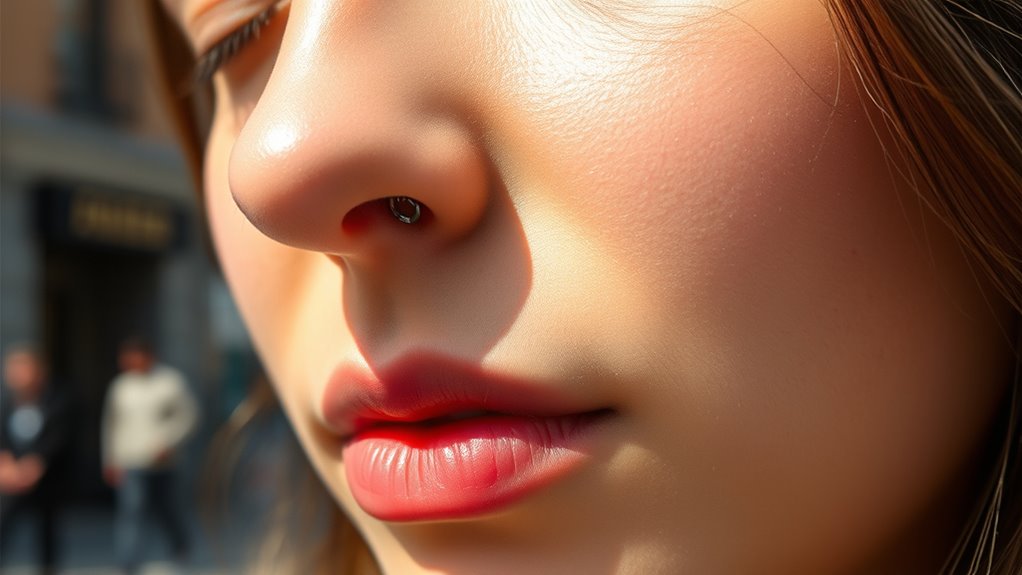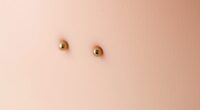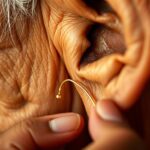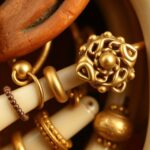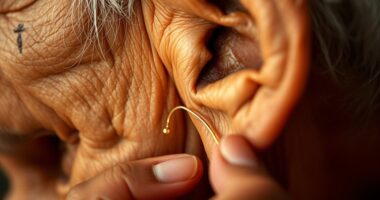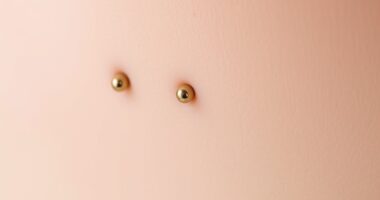Septum piercings started as symbols of status, spiritual beliefs, and societal roles in ancient cultures, from African tribes to indigenous peoples of the Americas. Over time, they became associated with rebellion and alternative styles but have now grown into a mainstream fashion statement. Today, many wear septum piercings to express personal identity and cultural appreciation. Moving beyond aesthetics, these piercings carry rich history and meaning—discover how they symbolize more than just style.
Key Takeaways
- Septum piercing has deep roots in ancient cultures as a symbol of status, spirituality, and social identity.
- It was adopted by punk and alternative subcultures as a sign of rebellion and nonconformity.
- Over time, septum piercings transitioned into mainstream fashion, becoming popular among diverse age groups and styles.
- Today, it combines cultural symbolism with personal expression, reflecting identity and individuality.
- Recognizing its history enhances appreciation of septum piercing beyond mere aesthetics, emphasizing its cultural significance.
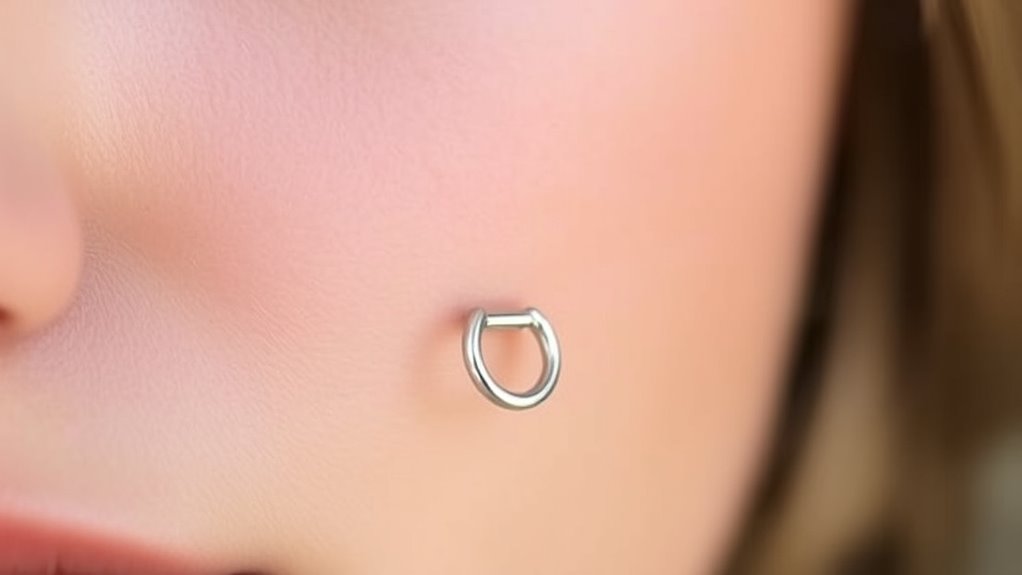
A septum piercing is a popular body modification that involves piercing the thin cartilage wall between your nostrils. While it’s now a trendy fashion statement, its roots run deep into history and cultural symbolism. Understanding the history significance of septum piercings reveals how ancient civilizations used this adornment to convey status, spirituality, and identity. In many cultures, piercing the septum wasn’t just about aesthetics; it carried profound meanings that connected individuals to their community and beliefs. For example, in some African tribes, septum piercings signified adulthood or warrior status, symbolizing strength and resilience. Similarly, among the indigenous peoples of North and South America, septum piercings served as markers of social rank or tribal affiliation. These piercings often involved more than just jewelry—they represented rites of passage, spiritual protection, or a connection to ancestral traditions. The cultural symbolism embedded in septum piercings underscores their importance beyond mere fashion, reflecting a person’s cultural identity and societal role. As civilizations evolved, so did the significance of septum piercings, but their core meaning as markers of belonging and status persisted across different societies. In some Middle Eastern and South Asian cultures, nose and septum piercings are still seen as auspicious, symbolizing fertility, prosperity, or religious devotion. Over time, Western societies began to adopt septum piercing, initially influenced by these historical and cultural contexts. During the 20th century, particularly within punk and alternative subcultures, the septum piercing became a symbol of rebellion and nonconformity. It was a way for individuals to challenge societal norms and express their uniqueness. Today, septum piercings have shifted from subculture symbols to mainstream fashion staples, but their cultural significance remains alive in many traditions. When you choose a septum piercing, you’re not just making a style statement—you’re connecting with a long history of cultural symbolism and personal identity. Recognizing the historical importance of this body modification deepens its meaning beyond aesthetics, reminding you that body art often carries stories, traditions, and messages from generations past. The understanding of cultural intelligence can also help appreciate the diverse significance of body modifications like septum piercings across different societies. Whether you see it as a form of self-expression or a nod to ancient customs, the septum piercing continues to embody a rich blend of history, culture, and modern identity.
Frequently Asked Questions
How Long Does a Septum Piercing Take to Fully Heal?
You might wonder how long a septum piercing takes to fully heal. Healing timeline varies, but typically, it takes about 6 to 8 weeks. Factors influencing healing include your aftercare routine, individual healing ability, and any potential infections. To guarantee proper healing, follow your piercer’s advice, keep the area clean, and avoid trauma. Patience is key, as rushing healing can cause complications and prolong recovery.
What Are the Best Aftercare Practices for Septum Piercings?
While the healing process varies, proper aftercare is essential. You should clean your septum piercing twice daily with saline solution, avoiding touching or twisting the jewelry. Choosing the right jewelry ensures comfort and prevents complications. Keep your hands clean, avoid irritants, and stay vigilant for signs of infection. By following these practices, you help your piercing heal faster and minimize scarring, making sure it stays beautiful and healthy.
Can Septum Piercings Be Reversed or Removed Easily?
You might wonder if septum piercing removal is easy. The piercing removal process generally involves gently taking out the jewelry, but reversal can be more complex if the piercing hasn’t healed fully. The reversal process often requires a professional’s help, especially if the piercing has closed or scar tissue has formed. While removal is usually straightforward, complete reversal depends on healing time and individual skin responses.
Are There Any Health Risks Associated With Septum Piercings?
Isn’t it true that every bold choice carries some risk? When it comes to septum piercings, you face infection risks and allergic reactions if not cared for properly. Poor hygiene can lead to infections, while allergic reactions to jewelry materials might cause swelling or discomfort. To stay safe, choose a professional piercer, follow aftercare instructions, and use hypoallergenic jewelry. Your health should always come first, even in style.
What Types of Jewelry Are Suitable for Initial Septum Piercings?
When choosing septum jewelry options for your initial piercing, safety is key. You should opt for hypoallergenic materials like surgical steel, titanium, or niobium to minimize irritation and promote healing. The initial jewelry should be lightweight, with a smooth, rounded shape to prevent discomfort. Always consult your piercer for their recommended initial jewelry safety standards, ensuring your healing process starts smoothly and reduces the risk of complications.
Conclusion
Remember, fashion is fleeting, but self-expression is timeless. Your septum piercing, once a symbol of rebellion, now shines as a mainstream statement of individuality. Embrace your style confidently, knowing that what sets you apart today can become tomorrow’s trend. As the saying goes, “History repeats itself.” So, wear your septum piercing proudly—it’s more than just jewelry; it’s a reflection of your unique spirit and journey.
I’m Gillian. I love piercings and tattoos- there’s something about the way they make your body look that just makes me happy. I started this blog to share my passion for piercings and tattoos with the world and to help people who are thinking of getting their first piercing or tattoo.
I’ve been writing about piercings and tattoos for a while now on piercings-body.com. I love sharing my knowledge with others and helping people make informed decisions about their bodies.

